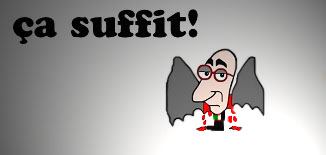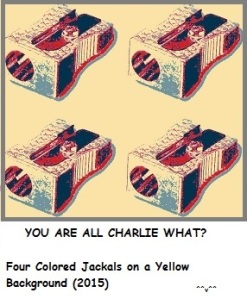Assumption (part 2)

Some time ago, in an attempt to give me a coherent answer to the useless question about how much a hypercube could weigh and imagining for this the consistency (mass / weight force) of an object belonging to a world beyond the three perceived spatial dimensions, I dreamed that it could not be that carried by objects ontologically belonging to three-dimensional space only, in which a cube of volume n3 corresponds to mass m3 and subsequently m4 in the fourth and m5 in the fifth dimension.
The immediate corollary was that not only the hypercube we wanted to reach was extended in four or more dimensions, but that obviously the starting minimum unitary cubes (quanta) also had to be, since they belonged from the beginning to the world of four, to five or to N dimensions (pipistro – Assumption – January 13, 2021).
With these premises and an elementary calculation, a measure of the mass was reached, considered as the weight of an object at rest in earth’s gravity, which grows in exponential progression as in the table below, first in part (B) referring to a sample cube projected in the fourth dimension only and then in what we are now considering as an example (C) referring to a cube “n + 1” – visually a “Rubik’s” cube – having 3 edge units, volume of (33) 27 units and mass (weight) corresponding to 27 kilograms measurable in the three standard dimensions, but subsequently projected up to the fifth dimension.

As shown in table (C), our hypercube, having an objectively measurable mass within the limits of its three perceptible spatial dimensions – as mentioned – of only 27 kg, corresponds in the fifth dimension to a mass (weight force) of 59049 kg, i.e. slightly more than 59 tons.
That said, no one prevents us from thinking that, in his hidden world beyond the visible and beyond the limits of the observed transformations, not only a part, but the whole mass of the hypercube “n + 1” living in five dimensions can be transformed into energy equivalent to that calculable through the simplest configuration of the Einstein relation in terms and within the limits, in fact, of a rest mass, that is E = MC2
The result (see below) would be dazzling.

To frame the entity in familiar terms, if the calculations adopted with the relative conversions are not wrong and given by way of example that the energy consumption in Italy for the entire year 2004 was approximately 304,490 GWh, in the three-dimensional and unique perceivable 27 kilos of our 5D hypercube – precisely because it hides 59 tons of itself and a billion GWh in an invisible world – there would be about 3284 (three thousand two hundred and eighty-four) years of Italian energy needs.
We have said invisible, but not non-existent. In a world that does not diffuse electromagnetic signals of itself (and in fact we do not see them), it could well be considered – hypothesis, in fact – under the gravitational profile, with all the intuitive consequences on the distribution of mass / energy in the universe and on the curvature of space-time.
(March 8, 2021)
Conjecture
Il potere di una mente fresca che considera un problema
da una nuova prospettiva è una delle meraviglie del mondo.
(Lee Smolin)

First, and to be very clear, I know that I don’t know. In fact I’m not sure there is plenty of the fresh minds mentioned above, but all the same it’s apparent that there’s something in technical ignorance that frees from any chain, be it book or dogma, allowing anyone to look and wonder naively at the things of our universe with an open mind, and – more important – without the slightest prejudice.
I said anyone. So, let’s move on.
Since in a hypothetical two-dimensional world a three-dimensional object is perceived as a section (see Edwin A. Abbot – Flatland), I think it is reasonable to believe that something, say a small three-dimensional part of an imaginary extra-dimensional object, can be perceived also by us.
In this perspective, notwithstanding the evanescence of any assumption about the superior dimensions, I believe it should be worth while looking for traces of strange and unfamiliar intersections in the known universe.
It should be something going beyond our theories at the time we try to measure it. That is, an ephemeral and elusive object, whose nature and behaviour we can’t predict, precisely because it seems we are ontologically interdicted to penetrate the physics of a higher dimension. Such an entity, though, should be perceptible, provided that an observation is made at the moment and within the limits in which this object happens to interact with our “3-known-dimensions-plus-time” world.
Talking about clues, it’s at least attractive to think of the elusive entities we currently imagine to be the primordial black holes – not made by the contraction of a massive star – and maybe, at the same time, imagine a relation among our ephemeral guest and the 95% of the universe we are far from having categorized.
While, of course, there’s a problem about it, since we might assume that the mass/energy of an extra-dimensional object could be measured in our 3-dimensional perceived reality, as far as we know, there should be really nothing new and contrary to the existence of mass and energy enclosed in something we can neither directly see, nor perceive by means of electromagnetic waves. And I think, first, of black holes, then of any manifestation of gravity, not to mention dark matter and the hypothetical fluctuation of an autonomous quantum field.
In this perspective I happen to read that “In many different places throughout the universe, we’ve detected very dense high-mass objects by their gravity – either indirectly via their affect on nearby bright stuff like stars or accretion disks of gas and dust, or directly via their gravitational waves. Many of these dense high-mass things are too dark to be regular stars, too compact and too dark to be clusters of stars, and too heavy to be neutron stars. They exist, they behave pretty much exactly the way physics predicts black holes would act, and there’s literally nothing else they could be. To quote an astronomer: we have “strong confidence that black holes, or at least objects that have many of the features of black holes exist”. In other words, if it looks like a black hole and acts like a black hole… we call it a black hole”. (How Do We Know Black Holes Even Exist? – YouTube channel MinutePhysics via Popular Mechanics Jan 11, 2018)
In fact there’s so much world out there, and about it we assume that only 5% is something we already know and can rely on. So, in the remaining 95%, somewhere hidden in the unknown, could be a tiny piece of dark something that looks like a black hole and acts like a black hole, but it’s a duck.
(February 25, 2021)
Assumption
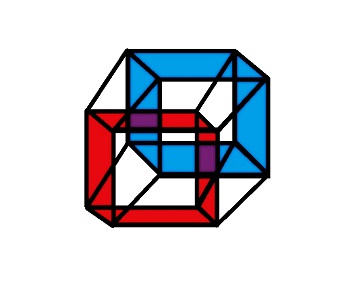
Guess – Compute consequences – Compare to experiment and see if it works.
(Richard Feynman)
One of those not necessarily useful things that go through your head when you wonder how the hell a hypercube weighs.
Imagining the dimensionless point means identifying a mere position on the plane. Then, ideally dragging the point on the same plane until it derives a straight line segment consisting of only length is a convention. That is, a mathematical artifice useful to represent ideal geometric figures in the real world.
So that, for example, the volume of a unit cube, of edge 1, is constructed by dragging the “starting” point into the three known dimensions. This is to say that originating from a point that is a simple location in space (or in the plane) it is possible to derive a segment devoid of thickness and qualified as a distance between two points, that is, consisting of only the virtual length and subsequently obtaining a square, equally lacking in thickness, side n.
Thus, in classical geometry it is imagined to “pull” a dimensionless entity, the point, to obtain a geometric entity (line or segment) defined by the only numerically quantified length n, to then eventually obtain a square of conventional surface n2 on the plane and finally a cube of volume n3 in space.
The consistency on the plane and subsequently in the space of the figures thus outlined (point, segment, square) is purely virtual. This is because it is not comprehensible or calculable the mass of a point that has no dimensions, as well as a line consisting of only the length. Nor that of a square with only two dimensions, which consists of a mere extension on the plane.
These figures are therefore abstract and massless. And consequently the quantity of matter (mass/weight) of a mathematical derivate three-dimensional cube would be just as evanescent.
It is difficult, in fact, defining the mass of the three-dimensional figure thus idealized with a volume, which came out of nothing but numbers. We should ask ourselves, first, how much a virtual point and a single-dimensional line weigh, and then what is the weight of the infinite square virtual surfaces necessary to compose an imaginary cube. (TAB A)
So, let’s first invent a heavy, material point, that is, a macroscopic quantum, whose minimum mass is unity. A three-dimensional object, that, for the sake of calculation, we choose to be a cubic shape with edge 1 and mass 1. Which also goes well with the granularity of nature.
From our starting “point” (that we therefore see as a small cube weighing one kilo), we can then build an object, we will fancy two-dimensional, but supplied with a mass, which we will still call segment. Visually it will be consisting of the sum of two contiguous cubes and it will be a small parallelepiped of thickness 1, length 2 and mass 2.
From the segment as indicated above, we can then derive a square of thickness 1, surface n2 (4) and corresponding mass m2 (4), and finally a cube of mathematical volume n3 (8) in the three-dimensional world.
Assuming that the mass of our object (i.e. our future hypercube) cannot be that of the figures ontologically belonging to the three-dimensional space only (where the volume n3 corresponds to the mass m3), we must instead imagine that its nature is the one suitable for its destination beyond the third dimension, since it is understandable that not only the hypercube we want to reach is extended in four or more dimensions, but also the starting cubes (quanta), which belong from the beginning to the world in four or five dimensions.
We therefore assume that the masses of the units that will form the object of our experiment (intended to be measured in the fourth and subsequent dimensions) must be consistent – starting from its very minimum components – to the world of four or more dimensions. (TAB B)
In other words, a fourth or fifth or subsequent dimension, either exists or not. And if it’s there (exactly what we assume), there is no reason why the unit cube, our starting “point”, as well as the other transit figures leading to the hypercube, are not, first, extended and therefore massive as suggested by the nature and the rules of the objects of the fourth/fifth, or subsequent dimension. Entities invisible to us and hardly imaginable, but not immeasurable for what concerns their mass.
We then mathematically launch our object into the fourth dimension (n4) and imaginatively call quantity (something like an hyper-volume) its geometric measure in the fourth dimensional world (the one which we cannot see). Then, we weigh the quanta/mass deriving from the subsequent calculations and observe the increase in volume, quantity and mass on the path from the second, to the third and then to the fourth dimension.
To the sample cube deriving from the square of side 2, which will become quantity n4 (16) (i.e. sixteen units in the shape of the fourth dimension) is subsequent a hypercube which has mass n8 (256) units.
The exponential progression activated considering the relationship between size and mass of this object, thus shows us that to a cube “n+1”, deriving from a square of side 3, inasmuch as it is already projected in the fifth dimension, corresponds a measure of 81 units of quantity and a mass of n8 (6,561) units in the 4th dimension. And by the next step up to the fifth dimension we will obtain an invisible virtual quantity of 35 (243) units and a mass of 59,046 units. (TAB C)
And here we stop because it is peculiar the thought of our invisible and massive five-dimensional object/event compared to the meters and kilos of the part that we can perceive.
The newly conceived five-dimensional monster, of which however as beings bound to the three-dimensional world, we cannot see and measure anything else than the appearance and/or intersection (Edwin A. Abbot, Flatland) of a cube of three units of edge and 27 miserable kilos of mass, would weigh, instead, given its nature, in terrestrial conditions (gravity), at rest, over 59 tons.
I don’t know if it’s dark, but it looks like a lot of matter. A real shame not to be able to see how it is made.
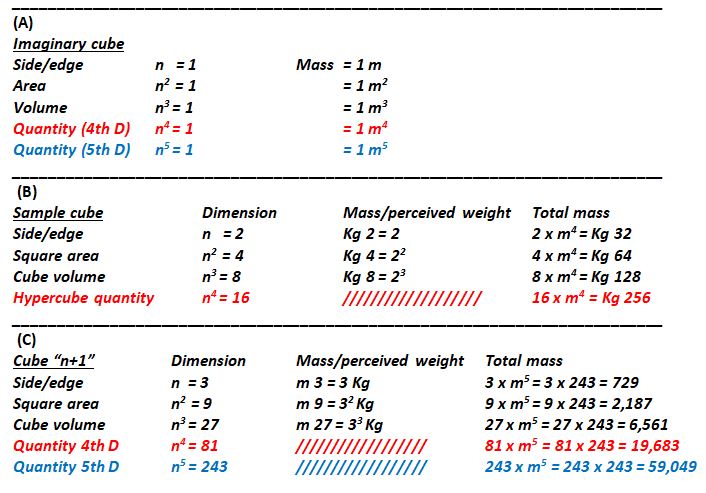
Sample cube made of eight unit cubes (re. TAB B)

Cube “n+1” (re. TAB C) (Rubik’s Cube)
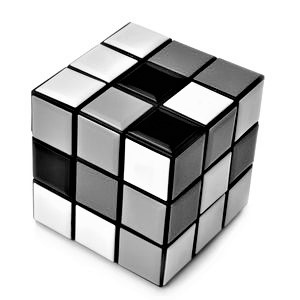
Tesseract (Never mind, I’m here because I’m cute)

The banality of male
 Fear of God can be defined as the attitude of the faithful who feel subjected to the constant judgment of divinity. It is a way of being introduced, albeit to a different extent, in every religious elaboration, where man has always imagined himself oppressed, subjected or at most – in a vaguely more evolved paternalistic conception – protected by God.
Fear of God can be defined as the attitude of the faithful who feel subjected to the constant judgment of divinity. It is a way of being introduced, albeit to a different extent, in every religious elaboration, where man has always imagined himself oppressed, subjected or at most – in a vaguely more evolved paternalistic conception – protected by God.
This feeling, this fear, is reflected in the fear of contravening the rule that is meant to be imposed by the divinity and being punished for this and must – in the design of those who made the system – direct the actions of the community to achieve the advantages preordained for the creation of the system itself, such as – historically, by way of example – the conservation of heritage and the aspiration to a relative, as often sterile, social tranquility.
In many cases, but for the same reason, fear is a pure manifestation of the male apparatus that created the system and in this respect it has been associated for millennia with the subjecting of women to men, understood as male, who then made it application in the political system, where the authority of power has finally replaced or has been added to the presumed authority of God, often corrupted by the unnatural and interested conception of physical pleasure as a rewarding situation for the man, undue for the woman and sinful for both.
But if there is no fear, the system – any system, be it religious or social – with the failure of the rule to which fear is preordained, collapses.
Thus, a system inspired by the primitive principle according to which physical strength prevails in the short term and in which a male author has drawn God in his own image also to draw an ephemeral convenience from it, rebels against the dissolution of fear from which his very existence derives. . And it does it in the crudest and most banal way, with violence.
From a different point of view it must then be added that to the maintenance of the system that has seen the undisputed dominion of the male in any situation, has been added until recently (and even today) the willing collaboration, in a subordinate and often parasitic role, of a woman who preferred to uncritically adapt to the system, making it her own, to reap some residual advantages, but making herself for this very reason the worst – unaware or devious – enemy of herself.
This certainly does not mean that an outcast lover or an ignoble father elaborate thoughts deeper than a puddle in order to mistreat and kill – considering themselves abandoned and dishonored – the partner or daughter seen as cheating, but only that their genetic heritage and cultural, as well as that of women who do not oppose it and for this reason support it, struggles to get rid of the pathology of a yoke that has lasted millennia, which, outside their head, is only vulgar and gangrenous alignment with the anachronistic advantages which inspired it.
The end of time
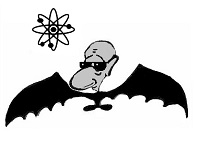
From the past to the future, from birth to the dissolution of death. Reason for anguish for the animal man and immediately for superstition, religion, ritual and remembrance to exorcise the precariousness of the biological fact.
While reasonably certain that nothing in the universe evaporates into nothing, there remains the terror of the loss of subjectivity and consciousness that has imposed on us for millennia the illusion that our being was much more than a mixture of particles fortunately compacted in little different form and substance from those of a stone.
We therefore imagined that we were destined for immortality without considering the fact that with the stone we have many more things in common than those that we were given by the many psychopathic divinities built with our traits and more often with our passions, emotions and fears, adding – for us – to end up roasted if we don’t follow their suggestions.
And among them the absolute fear of the after as an intrinsic element in the unidirectional perception of time.
So we have built time and we have theorized countless traces of time and its direction. So much so that we consider his consideration to be indispensable alongside everything. And finally, albeit amidst ups and downs, its position as a bizarre and inseparable component of the gravitational mollusk theorized by Albert Einstein.
Among these traces immediately emerges the instinctive, cultural and psychological one, consisting of the subjective sensation of the passage of time, the perception of a before and an after, accompanied by the observation of impermanence of the human being. So there is a beginning and there is an end. And then the principle of causality – that is the cause-effect relationship – with the temporal consequentiality of events exemplified in one of the first possible mental elaborations of the baby animal: if I cry they look after me. And again, the institutional and scientific trace of the second law of thermodynamics, the necessary evolution from hot to cold, from low to high entropy.
But by committing ourselves we can add them at will according to the usual exercise of extrapolating everything that confirms our convictions. Thus, the radial path of the electromagnetic wave, the quantum wave function, which collapses but the opposite has not been seriously hypothesized, the cosmological trace of expansion of the universe towards an increasingly disordered situation and the formation of black holes if we give credit to the idea of infinity and to the constitution of a singularity.
Who knows if the sensation of passing time is born first in the small of man and animal or if the principle of cause and effect is first appreciated, which immediately teaches him that to cry and lament brings being cared for and fed or in any case a reaction.
What is certain is that other conditionings emerge rather quickly, which serve to sculpt the subjective perception of time as repetition or duration and above all as a limit for the awareness of being only episodes destined to die.
Despite these and other traces, time is however not a fundamental element of nature. In fact, we are unable to define time in itself and we construct it as a completely arbitrary variable. Having ascertained that biological life is at an end, by relating its path to the occurrence of natural events such as the rising and setting sun, the phases of the moon, the movement of a pendulum, the heartbeat or in general an oscillation and all sorts of vibrations.
That is, we do not know what time is, but for practical reasons we had to measure it by referring to what we saw of the world around us: I will be back between two sunrises and two sunsets, with the new moon, when the hourglass has been turned twenty times.
Having overcome in the last century the idea of an absolute time as a fundamental element valid for the entire universe, we perceive today that time is not an event, but a utility in our macroscopic world and we finally learn that its essence cannot in any case be separated from that of space, whatever they are, both.
But we must admit that the thermodynamic trace, as opposed to the very survival of man, is precisely the main reason on which we rest our perception of time that passes and the awareness of the limits of our being. A very tenacious trace given that our biological position goes somehow against the tide with respect to the path of the universe towards equilibrium that foresees expansion and cooling. We are in fact a system – the biological one – that fights to keep itself in a state of low entropy, far from thermal equilibrium, fed in a rather complicated way by the energy that essentially comes from the sun.
Because this should be accepted. That is, the characteristics of our consciousness of existing are only a valuable imbalance that has distanced us but not freed from a path that seems to be oriented in a completely different way. The one whereby everything, planets and galaxies, all of us and possible billions of other and different vital entities dispersed as microscopic and imperceptible ripples of the universe, can go towards the depressing eternity of thermal death.
Tale of Charon
His name was Charon. But outside his neighborhood everyone knew him as the filthy rat. Most of his neighbours thought he’d been a great soldier, slightly wacko, if you want, but inasmuch as he had dedicated his entire life to the compulsive thought of owning the land he had stolen (and he was fond of his role), he was known as a hero by his fellows in stealing. Women loved his macho look, and they used to put his photo on the fridge, since they didn’t know where else they could put it.
One day -they say- he retired. And he left for a long trip around the country, with the money he had earned by cutting enemy heads. Well, he was coming back from this trip and a few miles away to home, he suddenly stopped in a restaurant on the route. They say the place had been called “A helluva roast for the beast” since, for a few bucks, it was not only possible to taste the best roast of the country, but portions were known to be so abundant that they could have fed even a bunch of demons.
Our hero didn’t have the slightest idea of what was bound to happen. So, he took a seat, ate his meal, was poured plenty of wine, then he fell asleep. He woke up in the backyard, handcuffed, oiled, filled with tomato and stuff pushed into all his holes. Then, some strange people with horns made into the backyard to make his acquaintance.
Our hero was not so clever and at the sight of the horned people the smartest thing which came to his mind was to ask, “and the vegetables?” The waiters were all around him, they looked at each other, a kind of a smile on their face. One simply said – sorry, hon, you don’t understand, the vegetables were you. Now, it’s over.
Then, lights went definitely out. They say Charon is still there, in the backyard, some say that even the demons refused his bitter flesh. He stares at the wall in front of him, blank eyes, indefinitely. Seasons, and years, and centuries passing by without anybody’s shiver. Now and then, someone remembers to spit at his memory.
(All characters appearing in this work are fictitious. Any resemblance to real persons, living or dead, is purely coincidental… Sort of.)
